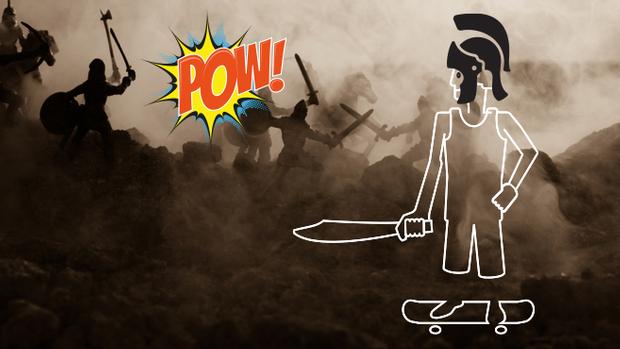Finding Our Voice, Managing Anger
Warrior
Recently a dear friend came to me in despair. He had taken verbal abuse and false accusations from a colleague for years and finally he lashed out. He told this man in no uncertain terms that he would no longer take that kind of abuse, but then he lost it. He yelled, screamed, and ranted until someone else had to intervene, fearful that the dispute would escalate into violence.
My friend was desolate. He was ashamed of the way he had behaved and his inability to hold his temper. Yet, at the same time, he was proud that he had finally found his voice. He realized that he needed to learn how to stand up for himself without losing his temper and his self-respect. Like many of us, he had not yet found a middle ground and was confusing his Warrior with anger. Although awareness of anger can be a signal to call on the Warrior, the Warrior archetype is more complex than the raw emotion that summons it. Emotions are one-dimensional; archetypes are combinations or constellations of feelings, thoughts, and actions.
There is a difference between feeling angry and acting angry. Angry actions and loud words may scare other people, or allow you to express yourself and vent, but in interpersonal relationships, such actions seldom get the results we desire. We want to strike a balance between the aggressive Warrior, always ready for a fight, and the worried Warrior who keeps anger under wraps at all times, fearful that if we let it loose, we or someone else will be destroyed.
To achieve this balance, we need to learn to call out the Warrior in small situations.
How to call on the Warrior:- Take a moment to assess the situation. Unless you are physically under attack, you don't need to respond (fight or flee) immediately. If in doubt as to how to respond, say nothing or temporarily leave the scene.
- Find the physical stance that evokes your Warrior. You cannot be a Warrior with slumped shoulders, downcast eyes, or an out of balance posture. Take a stance physically; center yourself and stand firmly.
- Ask yourself what it is that you do not like in this situation.
- Decide what you are going to do if the situation happens again, then speak it or write it down.
- Do it: follow through if it happens again.
Use your Caregiver to take care of your feelings, to work internally to soothe and nurture and externally to take physical care of yourself and others. Use your Warrior to stand up for yourself in the world, to protect yourself, and to speak for yourself in your interactions with others.
Together, these two powerful archetypes form the cornerstones of a strong ego.











_thumb.png)



_thumb.png)
_thumb.png)
